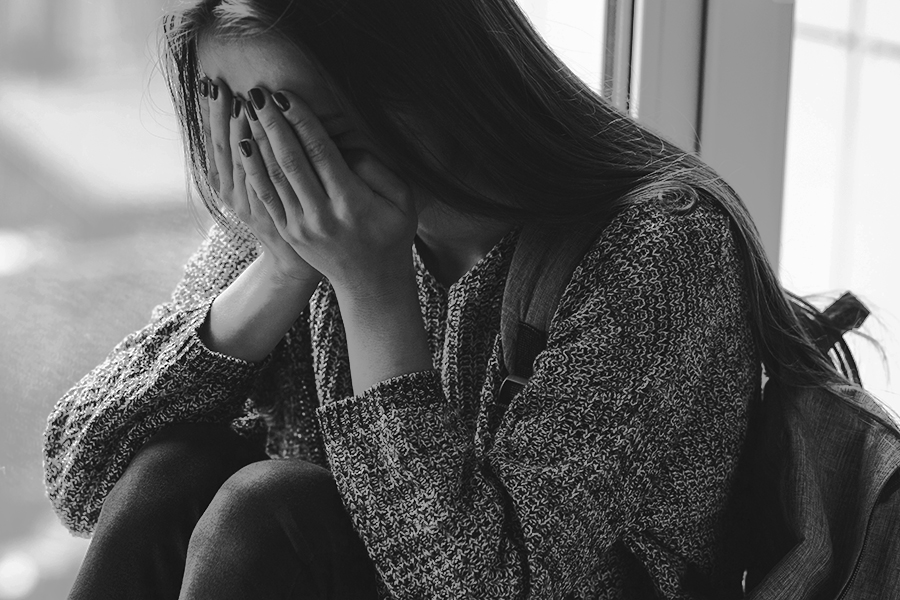Stressed, severely depressed students seek counseling services

Suicide is the leading cause of death among college students, according to Linda Porzelious, a licensed psychologist.
Porzelious provides personal counseling services to Oregon State University-Cascades students.
Suicide prevention is important, explained Central Oregon Community College’s CAP Center Director Vickery Viles, because it is a very serious problem.
“We have lost students here at COCC to suicide,” Viles said. “It is a real problem and a preventable situation.”
Free personal counseling is available to students taking at least one credit at COCC and to non-credit students in the Adult Basic Skills program, according to Viles.
Over 30 percent of college students report being “significantly stressed,” explained Porzelious.
Finding a job and repaying student loans after graduation is weighing on the minds of OSU-Cascades students, she said. Many are concerned about entering an uncertain job market.
Porzelious refers students to the career counselor, and emphasizes the importance of staying focused on the present, which is something Sharon Richards suggests to COCC students as well.
Richards is a licensed clinical social worker who provides personal counseling to COCC students through a partnership with St. Charles Behavioral Health.
“I see so many students who are just over-the-top stressed out,” Richards said.
When students express anxiety over repaying student loans, Richards encourages them to stay in the “here and now.”
“When finances are a huge struggle,” Richards said, “it just leads to this ripple-effect that affects absolutely everything.”
As the economy “plummeted,” Richards said she went from dealing with students presenting with “lighter” issues like test anxiety to counseling students with more serious problems like chronic depression, suicidal thoughts and psychotic breaks.
“It got so much more intense,” Richards said.
A majority of students Richards meets are living solely off student loans.
A student she recently counseled, is struggling with severe depression that he attributes to isolation by an inability to do the things he loves that cost money, according to Richards.
“College students today are dealing with more stressors due to finances,” Porzelious said. “As a counselor, I can’t really solve people’s financial problems. But occasionally I can point them toward agencies that can help. What I do is try to help [students] find ways to deal with the stressors that they have in their lives.”
Tips for dealing with stressors
Take good care of yourself, emotionally and physically.
Get sleep.
Eat well.
Exercise.
Get out and socialize.
Have at least one or two close friends, you can talk to.
Get out and do things.
Don’t be too critical of yourself.
COCC student struggles with clinical depression
Megan McGarvey is a first year COCC student who suffers from clinical depression.
“I’ve seen the bad side,” McGarvey said, “when kids don’t get help.”
Two weeks before her senior year in high school a friend of McGarvey’s saw “no way out” and took his own life.
McGarvey’s friend, Joe, showed all the signs of being depressed, she said. “He was an outsider. He shut people out.”
“It was really sad because he was a really nice guy,” she said. “Even today I still wonder, if there was more that I could have done.”
Joe’s suicide was a wake-up call for McGarvey. It opened her eyes, she said, when she realized other people experience some of the same feelings she had.
“At one point I was suicidal,” she said. “I was lucky. I got help.”
High school was a difficult time for McGarvey.
“It was miserable,” she said. “You wake up feeling like you just don’t want to move. You don’t want to do anything. You don’t feel normal. I was an outcast.”
Cutting was McGarvey’s “release.” She said she cut her wrist just enough to feel pain.
“The pain counteracts what you feel inside,” McGarvey explained.
After being diagnosed with clinical depression, McGarvey met other “cutters” who, like her, used cutting as an escape.
“When you hold everything in that’s when the suicidal thoughts get worse,” she said.
“But when you can just let it out, let everything off your chest, you feel better.”
In spite of ongoing treatment, McGarvey is still susceptible to symptoms.
“I still suffer from time to time,” she said. “It’s a constant battle to keep going.”
When she is falling back into a “slump,” she said, she suddenly will lose all interest in hobbies and staying focused on school work becomes a challenge.
“Once I notice, I try to get myself going again,” McGarvey said. “It doesn’t always work and it can take a lot of time.”
Since starting yoga, managing her symptoms is much easier, something McGarvey believes is because exercise boosts the body’s natural endorphins.
“Yoga helps just let it all go,” she said. “I’m going to stick with it… because I love it.”
McGarvey’s goal is to offer hope to others suffering from depression.
“You can get through it. There is a way out,” McGarvey said. “You don’t have to resort to suicide because because there is help.”
Signs of depression
People who may appear to lead perfect lives could be severely depressed, explained Porzelious.
“They might be cheery when you’re around,” Porzelious said, “and maybe only the people who are closest to them really know they’re miserable.”
Symptoms of depression include: changes in appetite, sleep problems, decreased energy, difficulty concentrating, feelings of hopelessness and worthlessness, bad moods lasting two weeks or more and suicidal thoughts, according to Richards.
However, each case of depression is unique, explained Richards. So if someone notices any combination of symptoms in a friend or loved one, she said, he or she should find a way to talk to them about it.
Stigma of depression: Hiding behind a mask of shame
Depression is a very prevalent illness, but there is still a stigma that’s associated with mental health issues, explained Richards, which is why many people suffering from depression hide their symptoms.
“Some people are super uncomfortable with [depression]. It’s a taboo subject they don’t want to talk about,” Richards said. “It’s really sad. I am constantly trying to educate people.”
People who have not struggled with depression, Richards said, aren’t always aware that, if people could choose, they would not choose depression.
“The ‘pull yourself up by your bootstraps’ mentality is unhelpful,” Richards said. “All it does is make people feel more shame on top of how bad they’re already feeling.”
Depression poll
We asked 100 COCC students
Do you know anyone who is depressed?
74% yes
24% no
2% maybe
Have you ever felt depressed?
70% yes
27% no
3% maybe
Would you feel comfortable talking to a counselor on campus?
59% yes
32% no
9% maybe
What typically gets you down?
A. Conflict in your personal life 30%
B. Financial hardships 33%
C. Stress over schoolwork 14%
D. Conflict in the workplace 5%
E. Other 18%
Intervene and save a life
What do you do if you suspect someone you know is contemplating suicide?
“Don’t ignore it,” Richards said. Don’t be afraid to come out and ask, “Are you feeling depressed? Are you having suicidal thoughts? Do you have a plan?”
Use the “QPR” Method:
- Question about suicide.
- Persuade them to get help and to be there with them to get the help they need.
- Refer them to the counseling center, therapist or crisis hotline.
Call 911. If you believe someone is at risk, report it to the police.
–Anna Quesenberry
The Broadside







